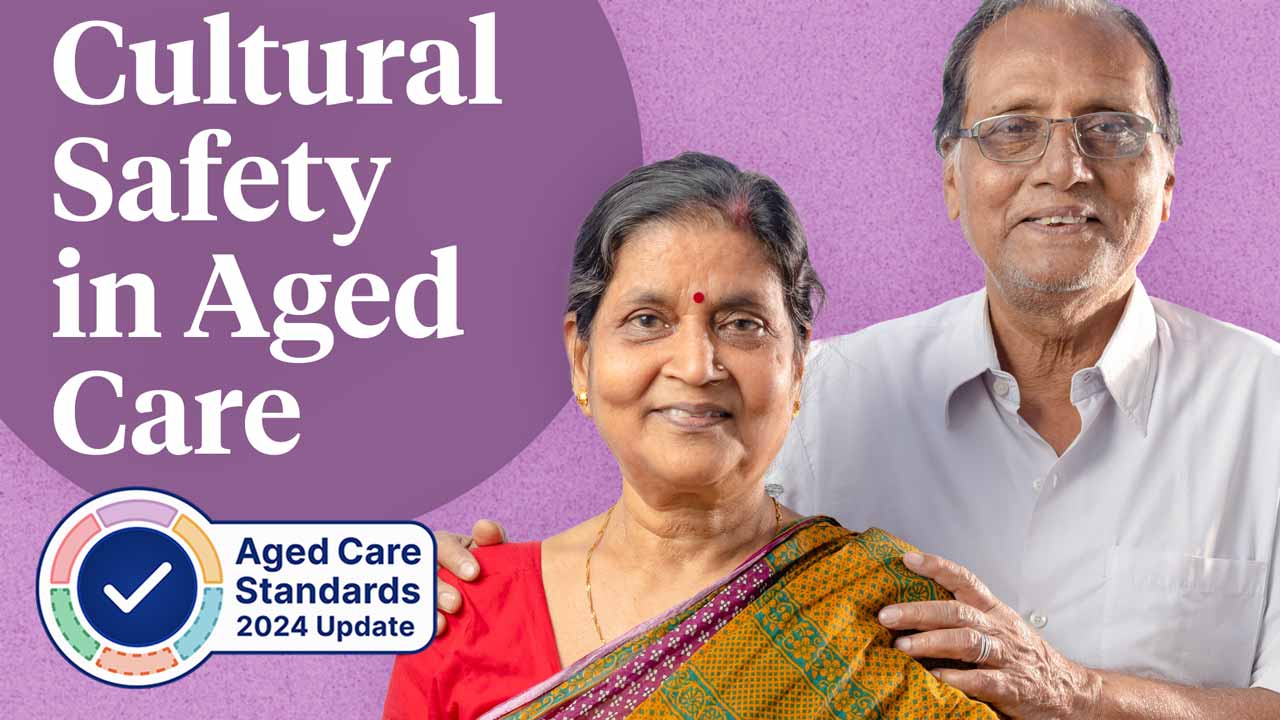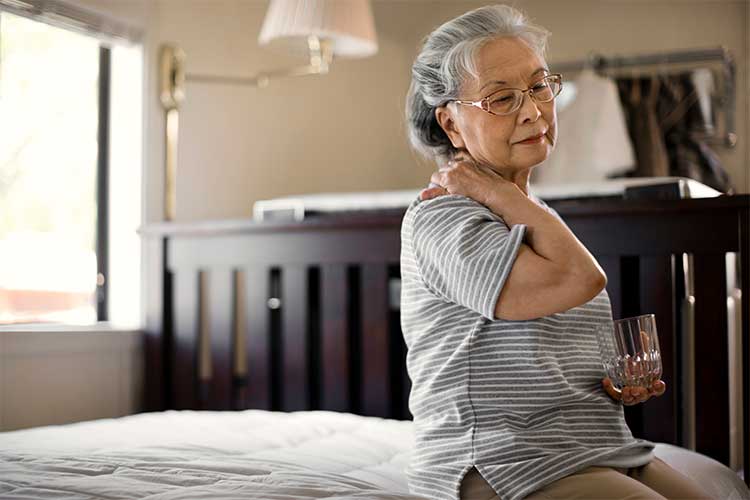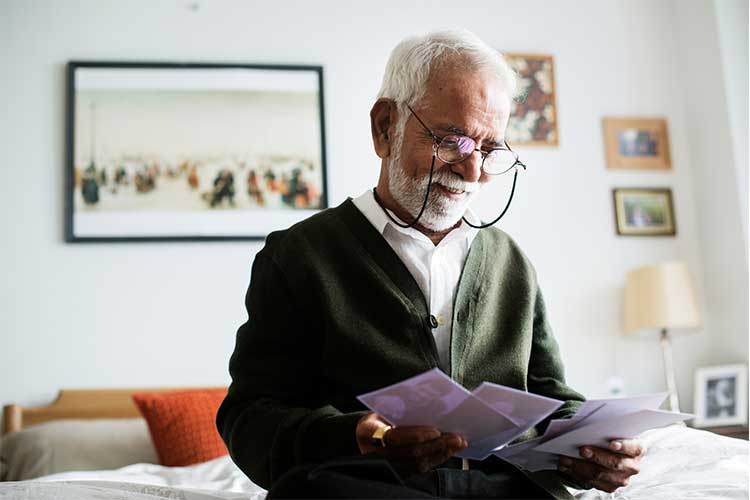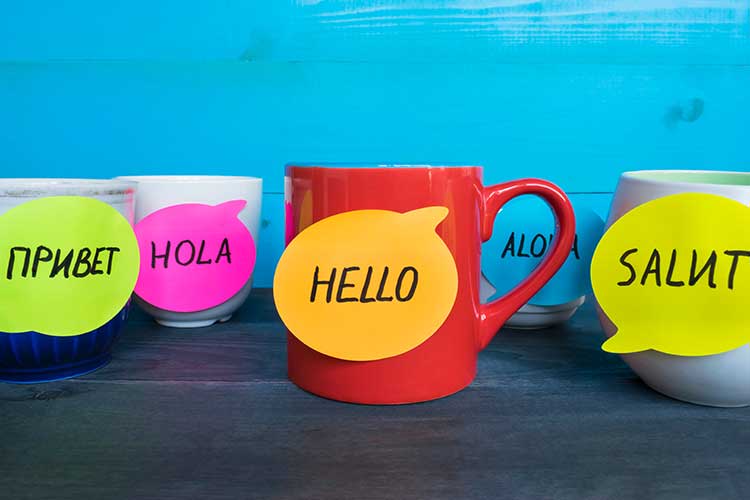The Importance of Cultural Safety in Aged Care
Published: 24 March 2024

Published: 24 March 2024

To read about cultural safety in home care settings, see: The Importance of Cultural Safety in Home Care.
The Royal Commission into Aged Care (2021) found that Australian aged care services are not appropriately meeting the needs of culturally and linguistically diverse residents, stating that the existing system cannot adequately provide care that is ‘non-discriminatory and appropriate for people’s identity and experience’.
Furthermore, the Royal Commission identified a systemic lack of appropriate staff training in culturally safe practices, reporting that staff have little knowledge about the additional needs of people from diverse backgrounds (RCACQS 2021).
In Australian aged care facilities, residents will have come from vastly different backgrounds and have varied life experiences. Having knowledge of and respecting an individual’s cultural background is crucial to being able to provide person-centred care.
The necessity of cultural awareness in aged care is reinforced by The National Aged Care Quality Alliance’s definition of quality care:
- ‘Services that are consumer-driven, have a wellness and reablement approach, are affordable, sustainably provided, and are inclusive of the diversity of older people according to their needs.’
(RCACQS 2019)

Culture refers to values, customs, languages, social structures, beliefs, patterns of human activity and shared experiences - the symbolic structures that provide meaning and significance to human behaviour (Engebretson 2016; Rawson 2019).
Culture is fundamental to how we live and informs how we interact with the world (Rawson 2019).
Cultural safety involves being mindful of the similarities and differences between cultures and using this knowledge to inform your communication with members of different cultural groups (HETI 2018).
In healthcare, this means you must act in a way that recognises, respects and nurtures your resident’s identity while ensuring you meet their needs, expectations and rights. Instead of working from your own perspective, it’s important to consider the cultural perspective of the person you are caring for (HETI 2018).
As a healthcare professional, you can make a difference in the lives of your residents by doing your own research (see SBS's Cultural Atlas) and incorporating cultural awareness into your care.
In the Broome hearing of the Royal Commission interim report - in which culturally safe care to Aboriginal and Torres Strait Islander peoples was a primary focus - Graham Aitken, a Yankunytjatjara descendant and the Chief Executive Officer of Aboriginal Community Services, explained what culturally safe care should look like:
- ‘The judge of what is culturally-safe is up to the individual. We will speak to the Elder about what they need for us to be culturally safe or appropriate. It’s a respect that we treat everyone as an individual and with dignity and to us that’s what cultural safety is about.’
(Transcript, Graham Aiken 2019)
Standard 1: The Person - Outcome 1.1 Person-centred care (Action 1.1.1) of the strengthened Aged Care Quality Standards requires staff to interact with older people in a way that makes them feel safe, welcome, included, and understood - naturally, this involves considering and respecting their culture (ACQSC 2024).
Furthermore, Action 1.1.2 requires aged care providers to:
(ACQSC 2024)
Statistics from the most recent national Census in 2021 reveal how culturally diverse Australia is, with just over one-quarter (27.6%) of Australians being born overseas (ABS 2022).
In fact, over half (51.5%) of Australians were either born overseas themselves (first generation Australian) or had one or both parents born overseas (second generation Australian) (Khorana 2022).
As of 2016, there were over 300 separately identified languages spoken in Australia More than one-fifth (21%) of Australians spoke a language other than English at home (ABS 2017).
As a health professional, you should be able to appropriately and sensitively care for residents of all backgrounds, including:
(DoH 2017)
Unfortunately, the perception of Australia’s healthcare system among people of culturally and linguistically diverse (CALD) backgrounds is far from positive.
People from diverse cultural backgrounds (including Aboriginal and Torres Strait Islander people) are also known to have difficulty accessing and using healthcare services in Australia, leading to poorer health outcomes (Khatri & Assefa 2022; White et al. 2019; AIHW 2023).
Reports from the Federation of Ethnic Communities’ Councils of Australia found that many people from CALD backgrounds did not wish to enter residential aged care at all (Rawson 2019).
The potential for error in the absence of culturally-aware healthcare is vast. Misunderstandings, miscommunication and culturally-unsafe care by healthcare professionals are often reported (Johnstone & Kanitisaki 2006). People of a non-Anglo-Saxon background have cited feelings of powerlessness, vulnerability, loneliness and fear (Garrett et al. 2008).
Failure to address cultural diversity can lead to various adverse outcomes, such as medication errors and interactions, misdiagnosis, inappropriate treatment and poor patient adherence to treatments (Brach et al. 2019).
Despite this, the government has signalled its commitment to helping people from CALD backgrounds access care that meets their needs through the Aged Care Diversity Framework.
The Framework is a set of principles that intends to ensure an accessible aged care system in which everyone, regardless of their social, cultural, linguistic, religious, spiritual, psychological, medical and care needs, can access respectful and inclusive aged care services (DoH 2017).

Language barriers have been found to have significant adverse effects on care, including:
(Shamsi et al. 2020)
It is the responsibility of aged care facilities to do what they can to support people from culturally diverse backgrounds. Government funding is available to support facilities to care for people of specific cultures. These services reflect post-war migration and are offered to Greek, Italian, Dutch, Jewish and Chinese older adults (Rawson 2019).
Language barriers can significantly reduce the experience of care in aged care facilities. Older people with English as their second language report losing their ability to communicate in English as they age and experience cognitive decline, and so will often revert to their first language (Rawson 2019).
Culturally safe and sensitive practice is defined by the Medical Board of Australia (2020) as:
The following are some practical tips for providing culturally safe care in aged care:
(Centre for Cultural Diversity in Ageing 2018; Rawson 2019)
Culture-specific information allows us insight into the lives of people who share ethnicity, language, religion or other characteristics that individuals identify with or groups that they belong to (Centre for Cultural Diversity in Ageing 2018).
While culture-specific information will inform your work with individual residents, keep in mind that within any cultural group, peoples' values, behaviour and beliefs can vary greatly (Centre for Cultural Diversity in Ageing 2018).
Learn and remember the ABCD Cultural Assessment Model developed by Kagawa-Singer & Backhall (2001). Make it part of your routine to take time to discuss the following with the residents in your care, as well as their families:
| A - Attitudes |
|
| B - Beliefs |
|
| C - Context |
Also identify community resources that may assist healthcare professionals, residents and family members, such as translators, healthcare workers, community groups, religious leaders, and traditional healers. |
| D - Decision-making style | Identify the general decision-making style of the cultural group, specifically the resident and their family. Explore whether individual or family decision-making processes are used. Ask questions such as:
|
| E - Environment | Determine whether there are community resources available to the resident and their family. |
(Kagawa-Singer & Backhall 2001)

| A - Assessment | Emphasis on the cultural aspects of a resident’s lifestyle, health beliefs and health practices. |
| C - Communication | Awareness of variations between verbal and non-verbal responses. |
| C - Cultural negotiation and compromise | Awareness of aspects of other people’s culture as well as understanding the resident’s views and how they articulate their problems. |
| E - Establishing respect and rapport | Foster a therapeutic relationship that portrays genuine respect for the resident’s cultural beliefs and values. |
| S - Sensitivity | Provide culturally-sensitive care to a culturally diverse group. |
| S - Safety | Create a space for residents to derive a sense of cultural safety, placing emphasis on the cultural aspects of a resident’s lifestyle, health beliefs and health practices. |
(Narayanasamy 2002)
In the Royal Commission's interim report, the importance of connection and communication was reinforced by witness George Akl, who recounted his late father’s experience of residential aged care while also living with Lewy body dementia.
Mr Akl’s father was born in Egypt, his first language was Arabic and he also spoke English fluently. However, following his diagnosis of dementia, his ability to speak English decreased. As this occurred, Mr Akl became the intermediary between his father and the facility’s staff (RCACQS 2019).
Mr Akl explained that when speaking Arabic, his father was significantly happier, prouder and more alive. As his father’s disease progressed, he became more attached to his culture, particularly through language, food and sounds. Studies into dementia show that sounds, food and culture enliven the minds of those living with dementia (RCACQS 2019).
As his son put it, Mr Akl "had the ability to communicate, there just wasn’t space for him to communicate properly: (Transcript, George Akl 2019).
Although we, as healthcare professionals, constantly strive to provide sensitive, compassionate care, there is no doubt we may find ourselves in situations that challenge us. Although we don’t need to have a comprehensive understanding of every cultural and ethnic norm of all those who live in our society, we do need to make an effort to communicate with our residents and understand their needs in order to provide culturally safe care.
Remember respecting the dignity and human rights of each resident is fundamental to providing quality care.
Question 1 of 3
Which one of the following is NOT part of the ABCD Model of Cultural Assessment?